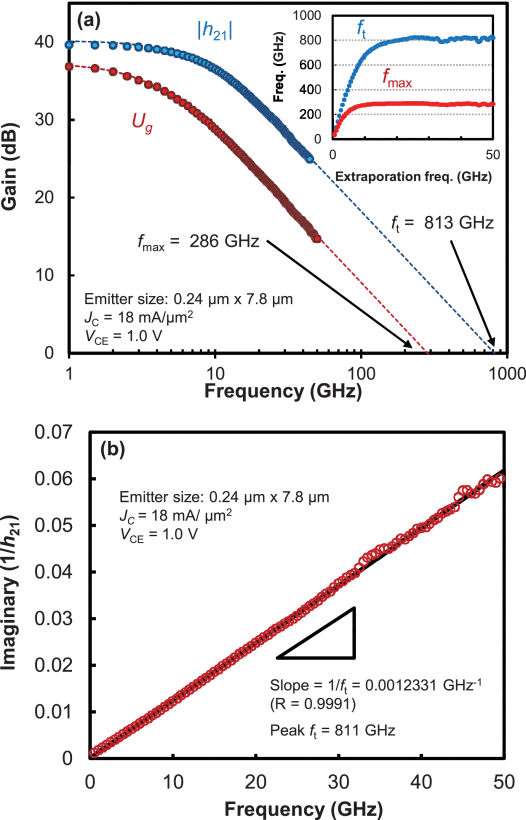J. P. M. Brito and S. Bampi
Two Transistors Voltage-Measurement-Based Test Structure
for Fast MOSFET Device Mismatch Characterization
IEEE Transactions on Semiconductor Manufacturing
doi: 10.1109/TSM.2020.2988095
Abstract - This work presents a test structure targeted to measure MOSFET mismatches with a fast method. It relies on two single-spot voltage measurements in order to extract VTH and β/β separately. The new methodology gives a theoretical increase in the measurement speed of 30x (23.17x in practice). The coefficient of determination (R2) of the linear regression analysis is used to compare standalone transistor measurements against the new proposed methodology. The correlation in the data demonstrates values not less than 0.94 (R2≥ 0.94). The test structure can reproduce parameter correlations, and it is capable of extracting MOSFET mismatch design parameters, such as Pelgrom’s AVTH, with an error of 2% and Aβ, with a negligible error. The experimental data presented herein are taken from measurements in prototypes fabricated in a 65nm CMOS bulk process. The whole circuit is composed of 16 2D addressable DUT device matrices, each having 256 same-size closely-placed MOSFET devices, totaling 4,096 MOS devices used in single-type (NMOS) transistor array.
URL: https://ieeexplore.ieee.org/stamp/stamp.jsp?tp=&arnumber=9068274&isnumber=5159394




